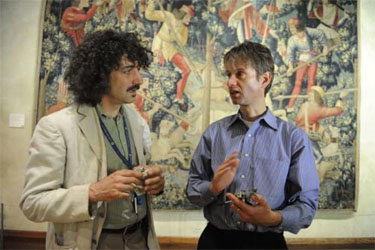IBM Tech for Metropolitan Museum of Art
Tech major IBM and The Metropolitan Museum of Art have announced the installation of a new wireless environmental sensor network at the Museum called Low-Power Mote. It will help preserve the works of art in its encyclopedic collection.
This technology has recently been installed and is currently being tested at The Cloisters museum and gardens, the branch of the Metropolitan Museum devoted to the art and architecture of medieval Europe.
Located in northern Manhattan, The Cloisters has a collection of approximately 3,000 works of art, most dating from the 12th through the 15th century, ranging from illuminated manuscripts to polychrome wood sculptures, paintings, and tapestries.
“This pilot project has the potential to become an important tool in the Metropolitan Museum’s ongoing efforts to achieve the best environmental conditions for the works of art in our care,” said Paolo Dionisi Vici, associate research scientist in the Department of Scientific Research at The Metropolitan Museum of Art.
Works of art are very sensitive to fluctuations in temperature, relative humidity, and other environmental conditions. To preserve them for posterity, the climate in the galleries is tightly controlled and sealed cases are used for the most delicate objects.
Working with experts at the Metropolitan Museum to address the complex environment associated with art conservation, scientists from IBM Research are implementing the comprehensive solution called Low-Power Mote technology.
This involves time-stamped data collection through a wireless sensor network, data storage with real-time visualization, modeling, and analysis. This results in an ultra-low-power physical analytics technique that, combined with cloud computing capabilities, allows micro-environment sensing and more precise and accurate modeling.
“This project is a prime example of IBM’s physical analytics capabilities that can help predict and forecast change, and we’re pleased we can collaborate with the Metropolitan Museum to preserve treasured artifacts for generations to come,” said Hendrik Hamann, research manager, IBM Research.
Next steps for this technology include expanding over additional galleries of the museum, with the goal of developing an improved understanding of the effect of micro-climatic variations eventually leading to a fundamentally better approach to preservation of the art objects, throughout the museum.
IBM made this announcement Thursday, June 9.





